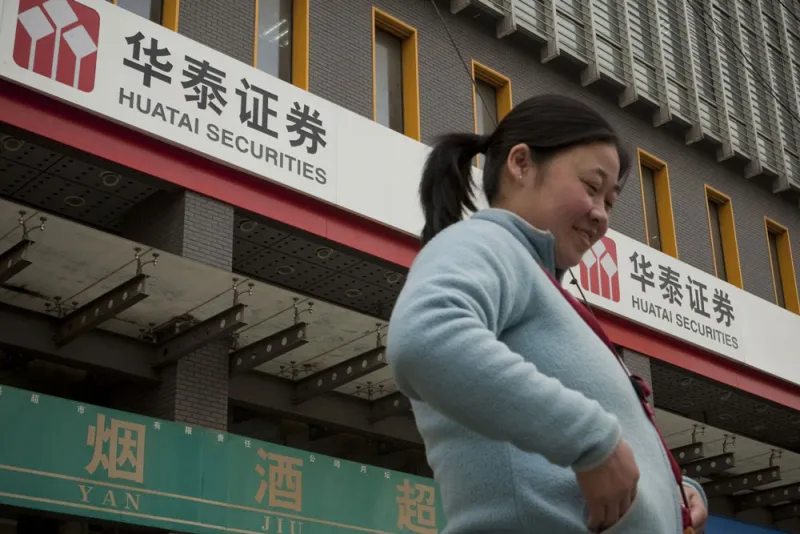It has been almost a year since the novel coronavirus was first detected in China, where it went on to trigger an acute health crisis and economic fallout that would soon go global.
But while most of world is still grappling with Covid-19, China is reporting little to no community spread and a market recovery. With the MSCI China Index up about 23 percent for the year and renewed investor interest in the Chinese A-share market, market observers are expressing cautious optimism.
“The past year saw a roller coaster ride for the global economy and to some extent [the] capital markets amid the Covid-19 pandemic,” said Eric Lin, head of research at UBS Securities Co., Ltd., the Chinese subsidiary of UBS. “China’s economy had suffered and recovered earlier than rest of the world, making it one of the few economies to grow GDP in 2020.”
According to Lin, cost cutting was a “crucial driver” of net profit growth in China, where corporate earnings grew on average over the 12 months ending in September. But the UBS researcher also reported “strong revenue growth in internet and selected consumption plays.”
These trends are part of an economic transformation in China that began long before the coronavirus pandemic took over, according to Peng Wensheng, head of the research department at China International Capital Corp.
At the beginning of 2020, Wensheng said, “we projected that China would further transform its economic structure from an investment-pulled growth model to a consumption-driven one.”
Wensheng added that these trends have prevailed in the capital markets despite the unexpected outbreak of Covid-19 and its impact. Still, international and domestic clients remain focused on the pandemic, and whether China will continue to outpace rest of the world in terms of recovery, according to Lin.
Investors have turned to a top tier of domestic and international firms to help them answer that question, based on the results Institutional Investor’s eleventh annual All-China Research Team. While domestic firms still dominate, international firms have made significant inroads in 2020, according to a survey of more than 3,600 investment professionals at nearly 900 institutions.
CICC and Huatai Securities tied for the No. 1 spot in this year’s overall ranking, which combines the votes of domestic and international investors. It’s a repeat victory for Huatai, which leapt from sixth place to the pole position in 2019, and a comeback for CICC, which fell to second place last year after finishing first in 2018.
UBS was once again the highest-ranking international firm, rising from 2019’s fifth place to take third this year. Meanwhile, BofA Securities was 2020’s most-improved provider, climbing to No. 4 from eighth place last year. Guotai Junan Securities rounded out the top five.
Survey participants rated the top firms across 29 sectors, and those votes were then weighted by each respondent’s Chinese equity assets under management to produce the main leaderboard. Investors were separately asked to vote for the best individual researchers in each sector to create an analyst-based leaderboard. In this ranking, Huatai Securities was the singular No. 1 firm, bumping CICC down to second place.
In order to highlight the difference in perspectives between domestic and international investors, respondents were divided by location to produce additional leaderboards from each point of view. In the mainland ranking, as in the combined, CICC and Huatai Securities tied for first place. International investors, meanwhile, once again chose UBS as the top firm. BofA Securities placed second in the international division, while CICC tied with Citi for third.
[II Deep Dive: Asia’s Top Researchers Say the Worst Is Over — but Recovery Is ‘Far From Certain’]
With the threat of Covid-19 locking international investors out of China for almost all of 2020, all communication between overseas clients and domestic analysts and companies has occurred online, according to CICC’s Wensheng. For mainland clients, however, it’s mostly business as usual, Wensheng said.
“When COVID-19 was spreading in China, we saw a decline in demand from both domestic and overseas clients, and almost all communications and conferences with clients were held online,” he said. “As the pandemic subsided in China, our face-to-face services for domestic clients gradually resumed. At present, demand from and service for domestic clients are largely back to normal.”
But even as analysts and clients return to the office, Covid-19 has changed the service model of sell-side research in 2020, Wensheng said, pointing to technology such as instant messaging and online conference software, as well as the kinds of research that analysts are producing.
“New topics and thoughts of interest to sell-side analysts include the pandemic’s varying impacts on different asset classes and regions, medium- to long-term changes brought by the pandemic in China and around the world, as well as accelerated global digital transformation and the widening wealth gap amid the pandemic,” he said.
At UBS, Lin said that investments in technology proved important as the bank’s research team adapted to a virtual world where investors needed more and quicker updates.
“Our analysts have actually spent more time engaging clients who have demanded more research,” Lin said. The firm utilized big data to track the recovery globally and launched a thematic research series called China 360 to dive deeper into the most debated questions in the market.
Looking beyond the pandemic, both Lin and Wensheng believe that more competition in research is inevitable as the Chinese market continues to open up to foreign competitors.
“China remains a market where buy and sell-sides to continue to invest heavily,” Lin said. “Further liberalization of the capital market provides new opportunities particularly for foreign houses. With more new entries into China, we see rising competition in sell-side research as well.”







